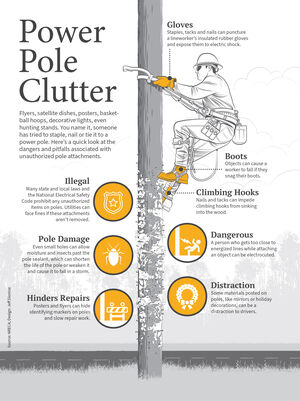The final bell
A last visit inside Ekalaka Elementary
July 13, 2018

Ryan OConnell
Betty Cline and Fulton Castleberry walked the halls of the old Ekalaka Elementary one last time on Saturday.
The hallway clock in Ekalaka Elementary is trapped at 9:46. Made in Minneapolis, Minnesota by the Miller Program Clock Company, it is self-winding and powered by two 1.5 volt dry cells, each roughly the size of a soda can. The upper level of the school is warm and getting warmer as sunlight soaks the empty rooms. Downstairs, the basement is cool and surprisingly bright along the windows. Voices echo.
Classrooms seem stretched without desks and chairs. Many are completely barren. One room has a box of ethernet cables and routers, another has a wheeled scaffolding. Upstairs, the original second grade classroom has a miniature American flag, tucked away in a cubby hole; it's the only item in the room.
The elementary school has been closed for two years. On Saturday, Betty Cline, Fulton Castleberry and Eva Grimes went inside - none had been inside for at least a decade. Castleberry was in second grade when the school opened its doors in fall 1942. One of the perks of this new building were its bathrooms - the old school before had outhouses.
In January of this year, a proposal was made, known as Option #6, to tear down the elementary school to facilitate a new hospital. The proposal will likely be on the general election ballot this November. In July 2014, a vote to construct the current elementary school was passed and the school opened in fall 2016.
Montana has a history of putting education to the forefront. In March of 1920, Governor S.V. Stewart announced a teacher appreciation week, 64 years before a national week was solidified. The nation faced a shortage of teachers: One hundred and forty-three thousand instructors had left the profession in 1919, and the summer of 1920 foresaw a shortage of 39,000 for the coming fall.
Throughout the state, higher teacher salaries and professional standards were called for. An April 23, 1920 ad in the Ekalaka Eagle read: "Wanted - Teacher to apply for school in Dist. No. 10 for coming year. - Address, John Larson, Clerk, Ekalaka." The district filled its teaching positions by the start of school that fall.
Cline not only attended school in this building, she taught music and PE here for a total of 18 years. In her former music room, in the basement of the school, she remembers drum circles, singing and games. On a bookcase are binders with sheet music and lessons she taught with; Cory Lovec and Jon Cline were the best trumpet players she ever had.
At one time, Cline said, there was a big cook stove in the next room. The staff could hear her teaching and kitchen aromas would permeate into her classroom. Olfactory memory is persistent; a scent can freeze time and body, before it melts on the tip of a tongue. Castleberry remembers the smell of burning coal coming from the boileroom. In the office, Grimes is returned to Kindergarten after remembering her teacher Susan Tooke's perfume.
In the hallways are two carts with TVs sheathed in clear plastic, VCRs and a record player, a photocopy machine. The trophy case has been broken; a golden young man in a wrestling uniform lays on the shelf, his bottom accolades missing. There are mugs in a sink. Amongst decades old janitorial supplies is a yellow coat rack with names: Katy, Turner, Emily, Jonahs, Kenzie, Darin, Brennen.
Hallway walls are spotted by colorful handprints and the names of students; the last hands on the walls belong to CCHS Class of 2022.
The Russell and Speelmon children were among the students at the original grade school in Ekalaka, a log cabin built in 1889 and located 5 miles southeast of town. A picture in the Carter County Museum archives shows an unnamed teacher with that first class outside the structure, a flag pole jutting above the single entryway.
An undated picture, possibly taken between 1910 and 1920, shows a gathering of adults outside of the log cabin school, perhaps there for a reunion. The building appears unused, the flagpole is missing and the people are relaxed. There is a car in the background, next to a horse and buggy.
In 1894, the first frame and lumber schoolhouse was erected. It was painted white and cost $1,600 to build; equivalent to about $45,300 in 2018. Records show Miss Lottie Sykes taught in this school in 1904 and 1905.
The museum's archives house a picture labeled as a Christmas party at the new schoolhouse, likely taken in December 1894. People dressed for a formal dance are three deep along the walls. A woman in a dark dress stands in the background, next to a three or four man orchestra. Focus is on a tall young man, his hands clasped in front and below his waist. To this man's left, a mustached man only identified as Parkhurst holds a child blurred by motion.
A two-story grade school was built in 1914 on Mormon Avenue where Miss Johnson taught third- and fourth-grade. A high school was built on an adjoining site in 1922. The two-story grade school was used until 1941, when the Ekalaka Elementary explored Saturday was constructed. In 1952 more classrooms and a gymnasium were added.
Now, the gymnasium is cluttered with scattered tables, desks, boxes of books and cassettes, weight benches, an elliptical machine. On the south wall, other schools mascots are painted: Plevna Panthers, Wibaux Shorthorns, Broadus Hawks, Baker Spartans and Glendive Demons all traveled here to face the Pups.
Cline taught PE in this room. She remembers stringing up volleyball nets and the struggle of pulling out tumbling mats. She worried Pat Hansen would get hurt tumbling and diving during dodgeball because he gave 100 percent all the time.
Eva Grimes wondered where the climbing rope had gone. "I hope it burned."
There used to be another rope, said Castleberry, attached to a large, church style bell just up the stairs from the boiler room. The janitor would glance at his watch and pull on the rope to signal the bad: the start of class, the end of recess; and the good: lunchtime, the end of the day.
At the end of the elementary's final day, kids scattered and teachers had a moment of relief. The school sold some items, some were disposed of and some were left behind - things got lost in the shuffle. Grimes found a quilt with a former class' names stitched in it. A neatly folded American flag rests on top of a locker near the entrance, remembered until a final exit.
Superintendent Daniel Schrock said the new elementary has continued the tradition of having kids paint their names and leave a handprint. The metals class is sanding down the old merry-go-round and replacing its ball bearings; it is scheduled to be installed this fall. The elementary school was sold to Carter County in late June. Schrock said he recognizes the importance of the old school and plans on making a last inspection to make sure nothing significant is left behind.
But he can't take everything and memories can't keep everything. There's a balance, like a teacher allowing a small note card on a test; what gets written down? Ingrained memories are less about the events than the feelings they provoke. They can overflow, leaving a singular impression that's hard to define. "I have a lot of good memories [of the school]," said Cline.
Grimes suspected her heavy nostalgia was related to her formative years, when a child's brain is malleable, like fresh gum under a desk.

photo from Carter County Museum archives
The first class at Ekalaka's first elementary school in 1889.
Castleberry pointed out where kids lined up to take their cod liver oil pills before spitting them into the fountain. Cline went down the stairwell her brother and his friend got in trouble for dangling her over. For the millionth and one time, Grimes passed the Class of '88's topographical map of Montana she'd never really looked at.
The three left, the doors locked and clocks began to tick.











Reader Comments(0)